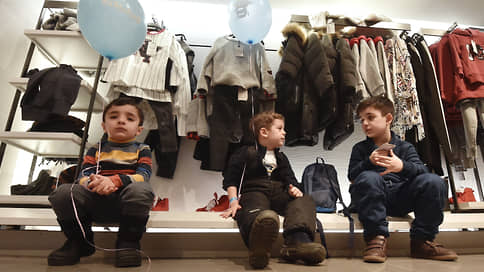Children and parents are preparing for the new school year in shopping centers
[ad_1]

The approach of the academic year and the business season contributed to the growth in the attendance of shopping centers in Moscow and St. Petersburg. Due to the decrease in competition after the departure of Western chains, the positive effect of the influx of buyers for Russian retailers turned out to be quite tangible – they managed to increase sales by 20-35%. But this trend is unlikely to last. Buyers have become more rational, and the economic situation is not conducive to consumption growth.
In the week of August 14-20, the Mall Index (reflects the number of visitors per 1,000 sq. m of retail space) in Moscow shopping centers increased by 1% compared to the same period last year, in St. Petersburg – by 2%. Such data is given in Focus Technologies. However, compared with the pre-pandemic 2019, the reduction remains significant: in Moscow — by 23%, in St. Petersburg — by 23%. But despite this, given the new wave of the crisis, analysts call the current situation positive. They expect the influx of shoppers to the malls to continue for several more weeks. The period before the start of the business season and the academic year is traditionally considered indicative for the retail real estate market.
Mikhail Vasiliev, head of research and consulting at Focus Technologies, explains that the overall growth of the Mall Index is achieved due to the return of consumers to large shopping centers, where new stores began to open after the departure of a number of international brands. Marina Malakhatko, Senior Director of CORE.XP, notes that large shopping malls in Moscow record traffic growth at the level of 4–5% compared to last year. She expects that in the coming weekend the dynamics will be significantly pronounced.
This week, the number of buyers really began to grow noticeably, says Ilya Yaroshenko, president of the Baon network. The expert expects that the current period in terms of revenue will be 20% better than last year. This is due not only to attendance, but also to a fairly good conversion when a store visitor makes a purchase: it has grown by 25% over the year. “Logistics and financial flows have improved, as a result of which the new collection arrived in stores earlier than last year. This contributes to the growth of the average check and marginality,” the expert explains.
Andrey Kapusta, marketing director of the Kotofey brand, noticed an increase in conversion by 5% per year, linking this, in particular, with the expansion of the range. Vyacheslav Katsegorov, director of strategic development at Magazin Magazin, says that retailers selling clothing, sports and entertainment goods have increased their turnover by 20% over the year. In the category of household appliances and electronics, the dynamics was 35%, the expert adds.
But market participants should not wait for traffic to return to the level of 2019, Marina Malakhatko is sure. “Firstly, online sales are growing, and secondly, inflation is growing. In addition, the general uncertainty in the economy remains,” the expert lists. Tatyana Divina, head of research and analytics at CMWP, predicts a decline in consumer activity by the end of this year. Due to the urgent increase of the Central Bank of the key rate, consumers, according to her, can “shift the focus from retail spending to savings.” Evgeny Saurin, head of the strategic consulting department at IBC Real Estate, also does not expect high results in retail in the fall: “The Russian consumer has become more rational.”
At the same time, according to Ms. Divina, at the end of September there may be a “technical increase” in the attendance of shopping centers due to the low base of last year, when the market was pressured by the decision of the authorities on partial mobilization. Eterna CEO Dmitry Tomilin expects sales to be calm. Although the overall market dynamics may remain subdued, Alexey Vanchugov, Managing Partner of Vanchugov & Partners, assumes that individual retailers in the apparel and footwear segment maintain a pronounced positive trend in sales due to their replacement of brands that have left the country.
[ad_2]
Source link





